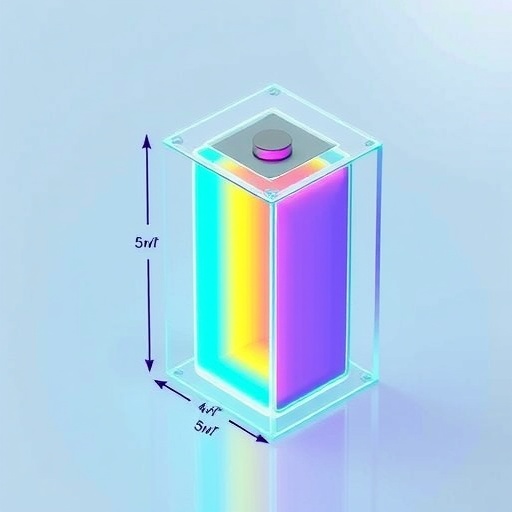In the ever-evolving landscape of energy storage, the importance of lithium-ion batteries cannot be overstated. They have become the backbone of modern technology, powering everything from smartphones to electric vehicles. The quest for better performance, longer life, and improved safety features has led researchers to explore innovative modeling techniques. One such groundbreaking approach is presented by Saban, Arslan, and Serincan, who introduce a novel framework that enhances the multiphysics modeling of lithium-ion batteries through the use of Dynamic Response Techniques (DRT).
The framework proposed in this study delves into the electro-thermal behavior of lithium-ion batteries, which is crucial for optimizing their performance across various applications. As energy demands grow, understanding the intricate balance between electrical activity and thermal management becomes paramount. Batteries operate most effectively within a specific temperature range, and the presence of heat can significantly influence both efficiency and lifespan. This multifaceted approach sheds light on thermal management strategies needed to avert thermal runaway, a phenomenon that poses significant risks in battery operations.
One of the key components of the proposed model is its ability to simulate the complex interplay between electrochemical processes and thermal dynamics. Traditional approaches often consider these factors in isolation, leading to an incomplete understanding of battery performance. However, this novel DRT-enhanced framework allows researchers to analyze these components simultaneously, offering a more comprehensive perspective on battery behavior under various operating conditions. By bridging the gap between electrical and thermal analysis, the framework provides insights that can lead to more robust battery designs.
The authors emphasize the significance of accurately modeling the charge and discharge cycles of lithium-ion batteries. These cycles are critical not just for performance but also for understanding degradation mechanisms that can adversely affect the battery’s lifespan. Their study reveals that conventional models struggle to capture the nuances of these cycles, often oversimplifying the electrochemical processes at play. By employing DRT, the researchers can better represent the transient responses of the battery, thereby enhancing predictive capabilities.
Safety, a significant concern for battery technology, is another critical aspect addressed in this framework. As detailed in the research, thermal events can dramatically influence safety parameters. The model’s capacity to analyze thermal distribution alongside electrochemical performance allows for the identification of potential failure points. By modeling the heat generation and dissipation processes accurately, the framework ensures that potential safety hazards can be addressed proactively, thereby reducing the incidence of catastrophic failures.
In addition to enhancing predictive accuracy, this framework also lays the groundwork for future innovations in battery management systems (BMS). BMS plays a crucial role in monitoring battery health, optimizing performance, and ensuring safety. Integrating the DRT-enhanced model into BMS can lead to more intelligent systems that can adaptively respond to real-time data, providing operators with precise control over battery operations. This adaptive capacity is essential for the integration of battery systems into larger energy networks, especially as the demand for renewable energy sources continues to rise.
The implications of this study extend beyond the immediate improvement of lithium-ion battery performance. As the focus shifts towards more sustainable energy practices, the enhanced understanding of battery behavior can facilitate the development of next-generation energy storage solutions. Future research directions are likely to take this framework and build upon it, potentially incorporating advanced materials or novel chemistries that promise even higher energy densities and safer operations.
Research on lithium-ion batteries is vast and encompasses a multitude of variables, making the need for robust modeling frameworks more critical than ever. The DRT-enhanced approach offers a fresh perspective not only by enhancing the granularity of the models used but also by fostering interdisciplinary collaboration among researchers, engineers, and industry stakeholders. The integration of this framework into existing research paradigms may usher in a new era of innovation in battery technology.
The study presents a rigorous validation process, juxtaposing simulated results against empirical data. This validation is fundamental to establishing the reliability of any modeling framework. With this comprehensive approach, the researchers have ensured that the new model not only provides theoretical insights but can also be applied in real-world scenarios, making it an invaluable tool for ongoing research in the field.
In summary, the multidisciplinary investigation by Saban, Arslan, and Serincan reveals a promising new frontier in lithium-ion battery modeling. By employing a DRT-enhanced electro-thermal framework, the research addresses critical gaps in current methodologies and presents strategies that could inform future innovations in battery technology. As the demand for advanced energy storage solutions escalates, such breakthroughs will play an essential role in shaping a sustainable energy future.
With the integration of this enhanced modeling framework, researchers and industry professionals are better equipped to tackle the challenges associated with battery technology. From safety improvements to efficiency advancements, this study sets a new standard for understanding and optimizing lithium-ion batteries, paving the way for further developments in the field. As the global shift towards clean energy storage accelerates, such innovative approaches will undoubtedly lead the charge in achieving more efficient, safe, and sustainable energy systems.
In conclusion, this novel framework not only advances the scientific understanding of lithium-ion batteries but also provides practical insights that can be leveraged to enhance the performance and safety of these critical energy storage systems. The future of battery technology is bright, and with ongoing research and collaboration, the possibilities for innovation are limitless.
Subject of Research: Innovation in modeling lithium-ion batteries through a DRT-enhanced electro-thermal framework.
Article Title: Multiphysics modeling of lithium-ion batteries: a novel DRT-enhanced electro-thermal framework.
Article References:
Saban, O.B., Arslan, M.A. & Serincan, M.F. Multiphysics modeling of lithium-ion batteries: a novel DRT-enhanced electro-thermal framework.
Ionics (2025). https://doi.org/10.1007/s11581-025-06644-z
Image Credits: AI Generated
DOI: https://doi.org/10.1007/s11581-025-06644-z
Keywords: lithium-ion batteries, multiphysics modeling, electro-thermal framework, DRT, energy storage, safety, battery management systems.




